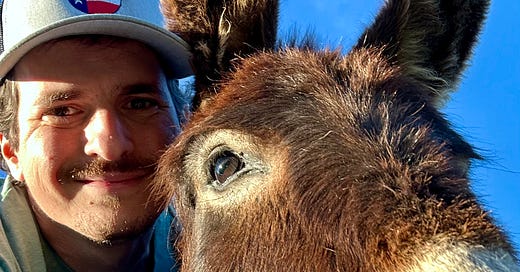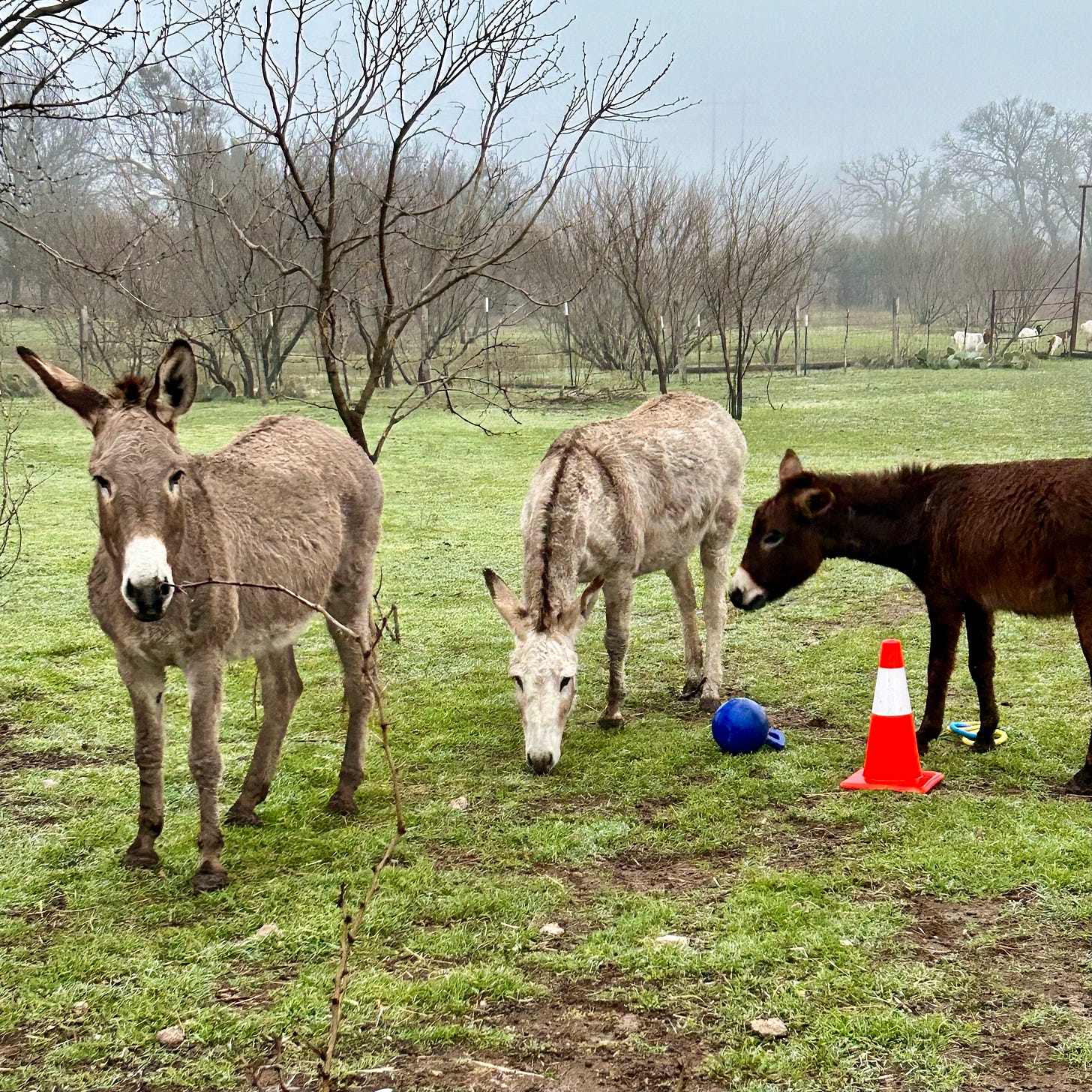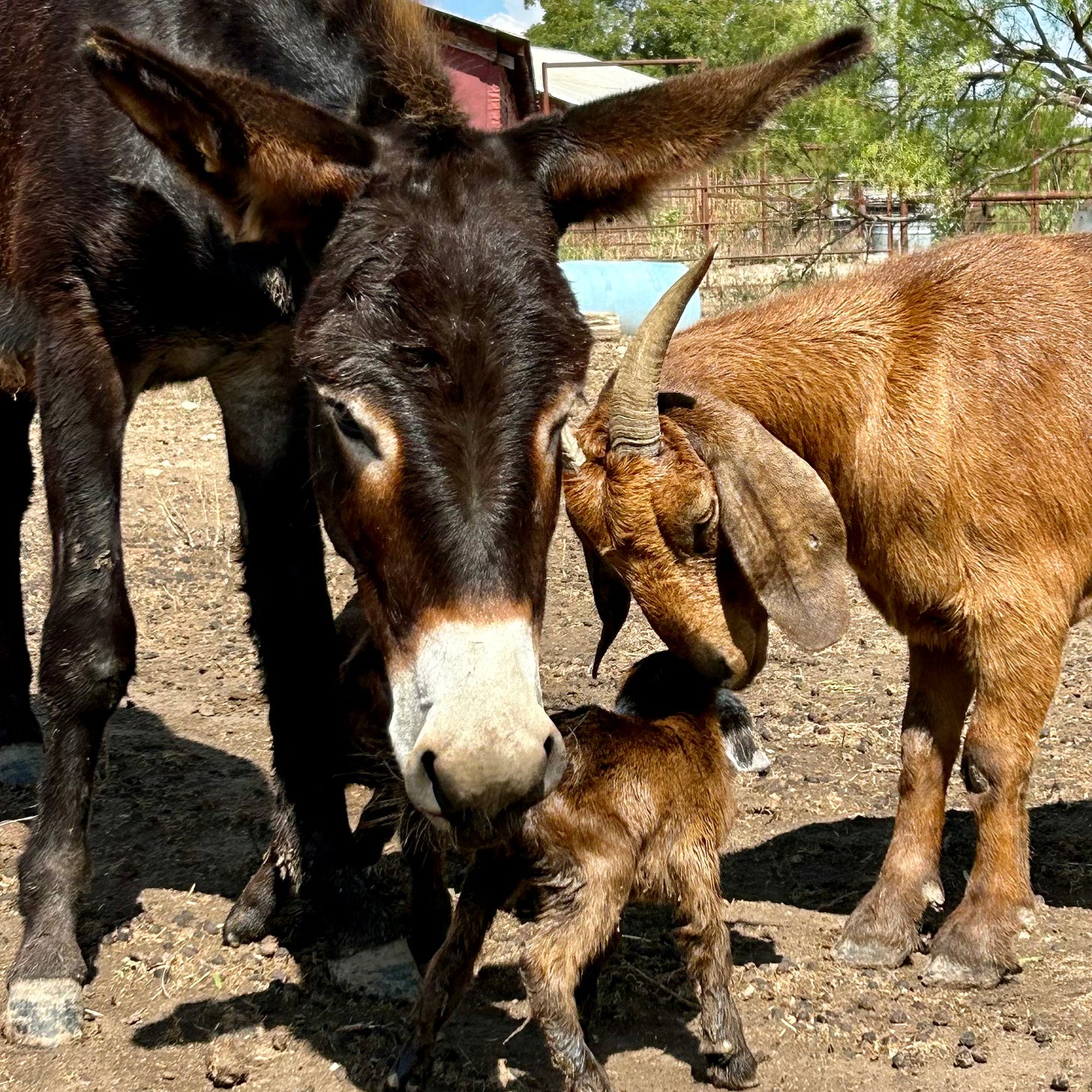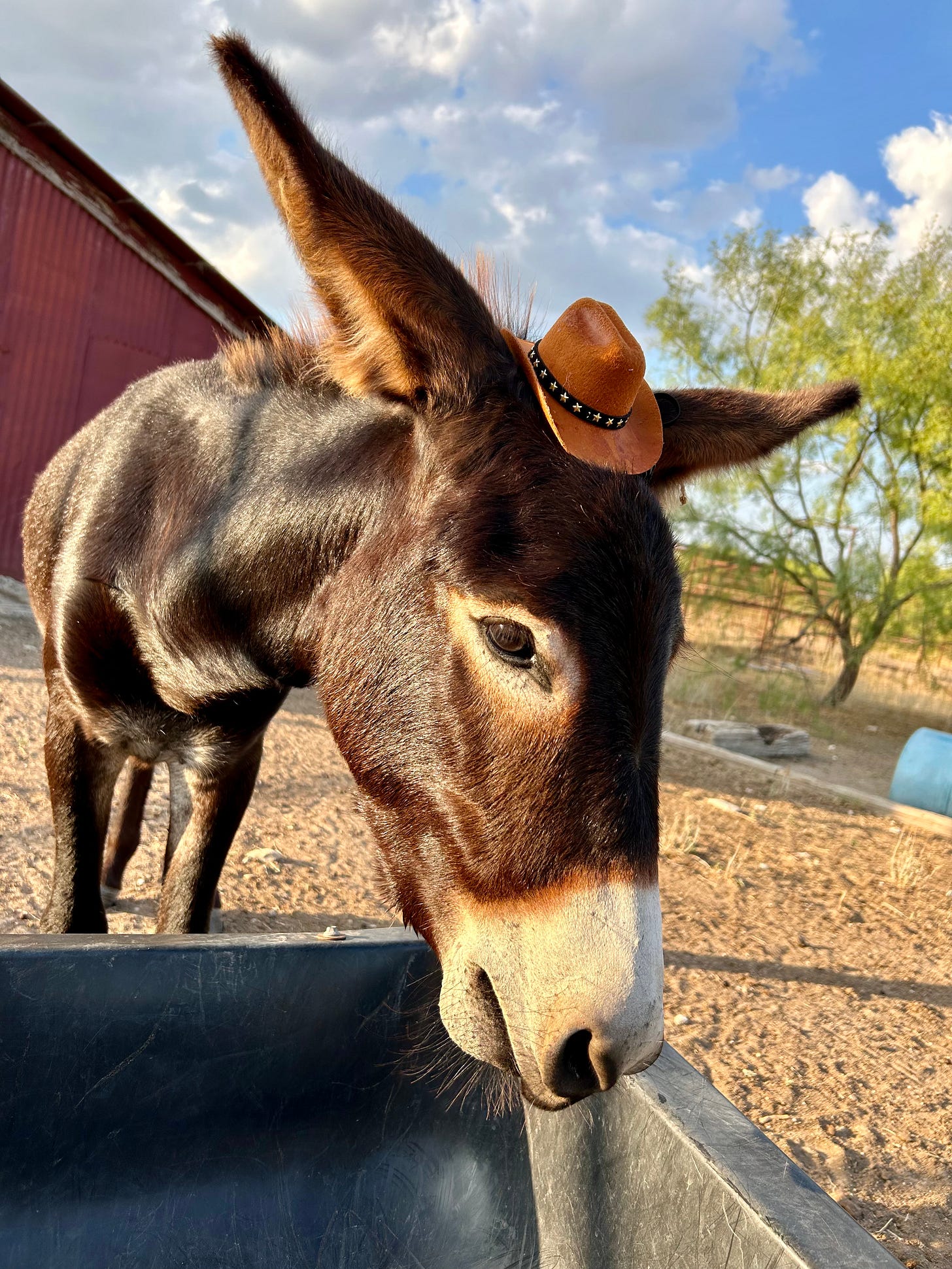Hey friends! Welcome to my Substack — where today we’ll talk about my newest methods to train my donkeys to be gentle with our new baby goats! Be sure to click that subscribe button, and let’s dive in!
While I’ve grown up around horses and other critters, donkeys are pretty new to my family. We bought our first donkey, Penny, just a few years ago. We got her since we needed a guard animal to protect the goats from predators. Donkeys are naturally hostile to any canine, which makes them perfect for guarding against coyotes. Donkeys are also desert animals, so they can survive dry conditions with not-the-best-grasses (e.g. the TX Hill Country).
As it turns out, Penny was a two-for-one special as she gave birth to her baby boy, Peso. He was the cutest little guy you’ve ever seen. Check the video below, it’s one of our first videos of Peso.
Sadly, as I discovered, not all donkeys are good with goats. Donkeys are like humans in the sense they each have their different personalities, and sadly Penny was nice to me but not so much for all other critters, including the ones she was supposed to “protect.” Everything we tried failed. We tried keeping her in other fields, but she would jump (or break) the fence. While it was very hard and I’m still conflicted about the decision, we sold Penny to another family with only other donkeys and cattle.
Peso, having been raised around goats, is much nicer to them. The two new donkey friends, Mattie and Daisy, we got for him (donkeys, like humans, are social animals; it’s not good for their health to be entirely by themselves) are also nice to the goats.
However, there is an exception: They are not always nice to brand-new baby goats. Sometimes they are. Sometimes they’re not.
Case in point: Blackhead vultures will quickly kill a newborn baby goat if it’s born out in the open. They’re not like your standard Turkey Vultures (w/redheads) that only eat dead things. We’ve lost several new babies due to those damn birds.
One day, I go out in the morning to let the goats out and I see a bunch of the black vultures circling the goat barn. I rush over there and what do I see? Peso standing over two brand new born babies. He was protecting them from those black vultures.
But another time, and this happened just recently, I let out one of our 3-week-old babies and their momma out in the field so they can get some experience out there while I was doing some barn work. While nailing down a roof, I hear all this commotion; looking over, I see Peso chasing after the baby. Thankfully there was some brush nearby that the baby was able to weave through to save his life.
I got building, crafting, and concocting. Before diving in, please be sure to subscribe and share this substack.
Method 1 — Babies in a Box
First, I put the babies in a 5x5 pen.
I summoned the donkeys with their favorite treats. Standing in the pen, I let a donkey sniff a baby then I immediately give it a treat. I do this once per baby per donkey. Lastly, I put the babies out of the pen, right at the donkey’s feet, and gave the donkeys more treats. I let the babies run around the donkeys for a few minutes, giving them positive reinforcement each time they are nice.
I do this a few times weekly until the babies are about 4 weeks old. However, that’s still 4 weeks of daily feeding and watering for the babies and their mommas, which drastically increases overhead and cuts into profits; hence why I’m also experimenting with methods to get this time down to 3 weeks or less.
Method 2 — Donkey in a Box
In an attempt to quicken the pace of normalization and conditioning, I’m now also experimenting with switching roles.
While it took a while to “bribe” Peso with treats to get into the pen, once he did I put a baby goat (the one he chased the other day) and myself in the pen. I gave him tons of positive reinforcement and even more treats. I especially gave them when he looked at the baby. After a single session with this method, Peso has seemingly been much nicer to this little one!
I’m planning a 3rd method, however it’ll either require me to construct a new specialty pen or to make modifications to our cattle corral. In the meantime, be sure to subscribe, like, comment, or share to help this substack grow!
See you next time, cowboy









Fantastic to see the baby goats!!